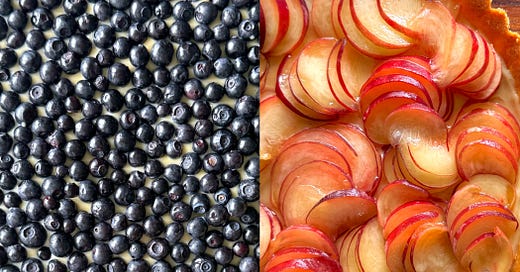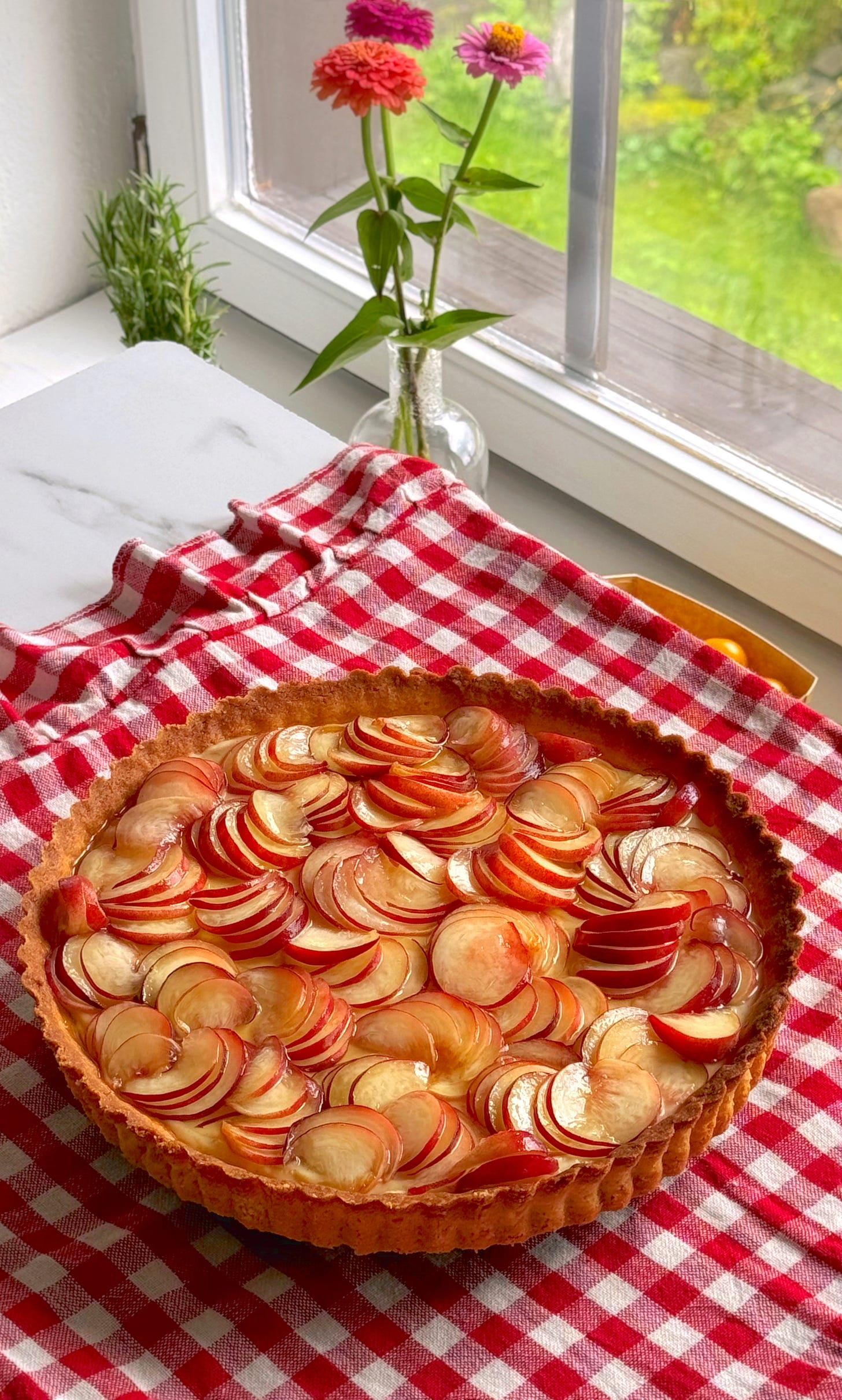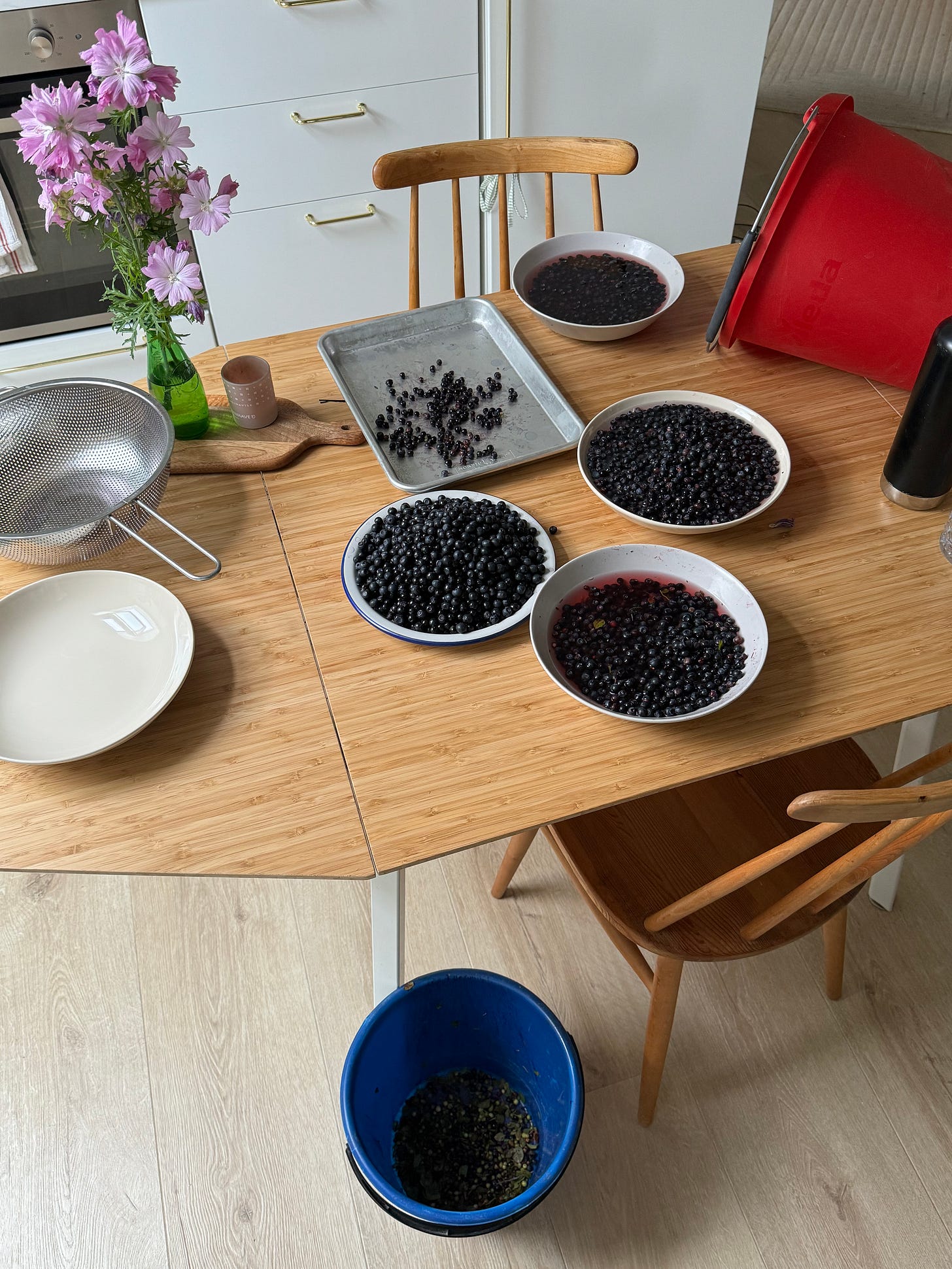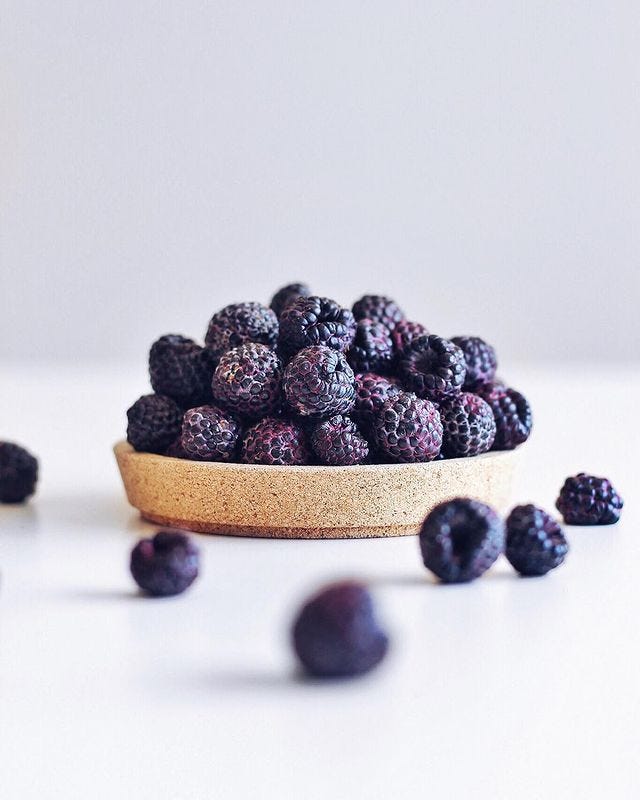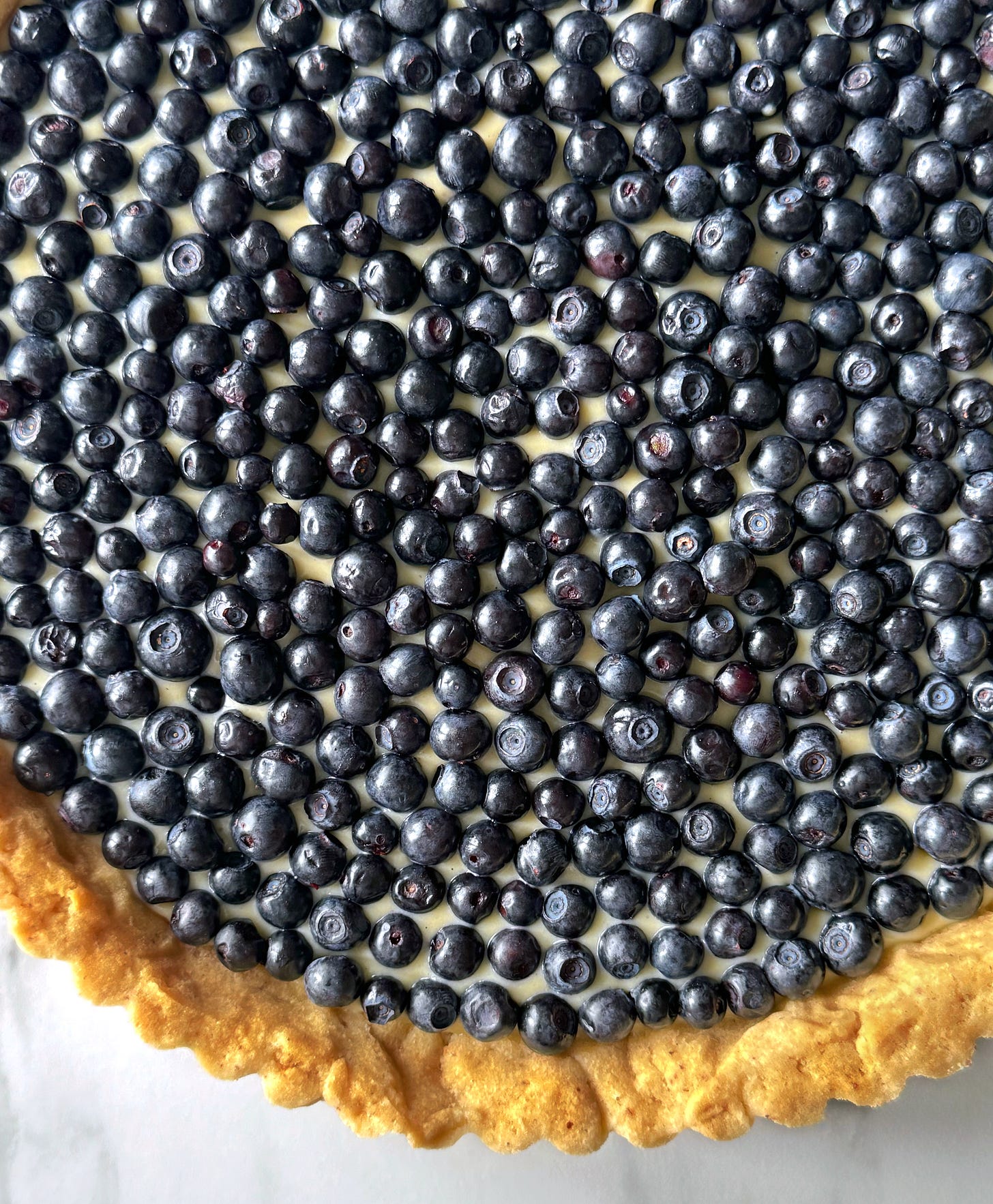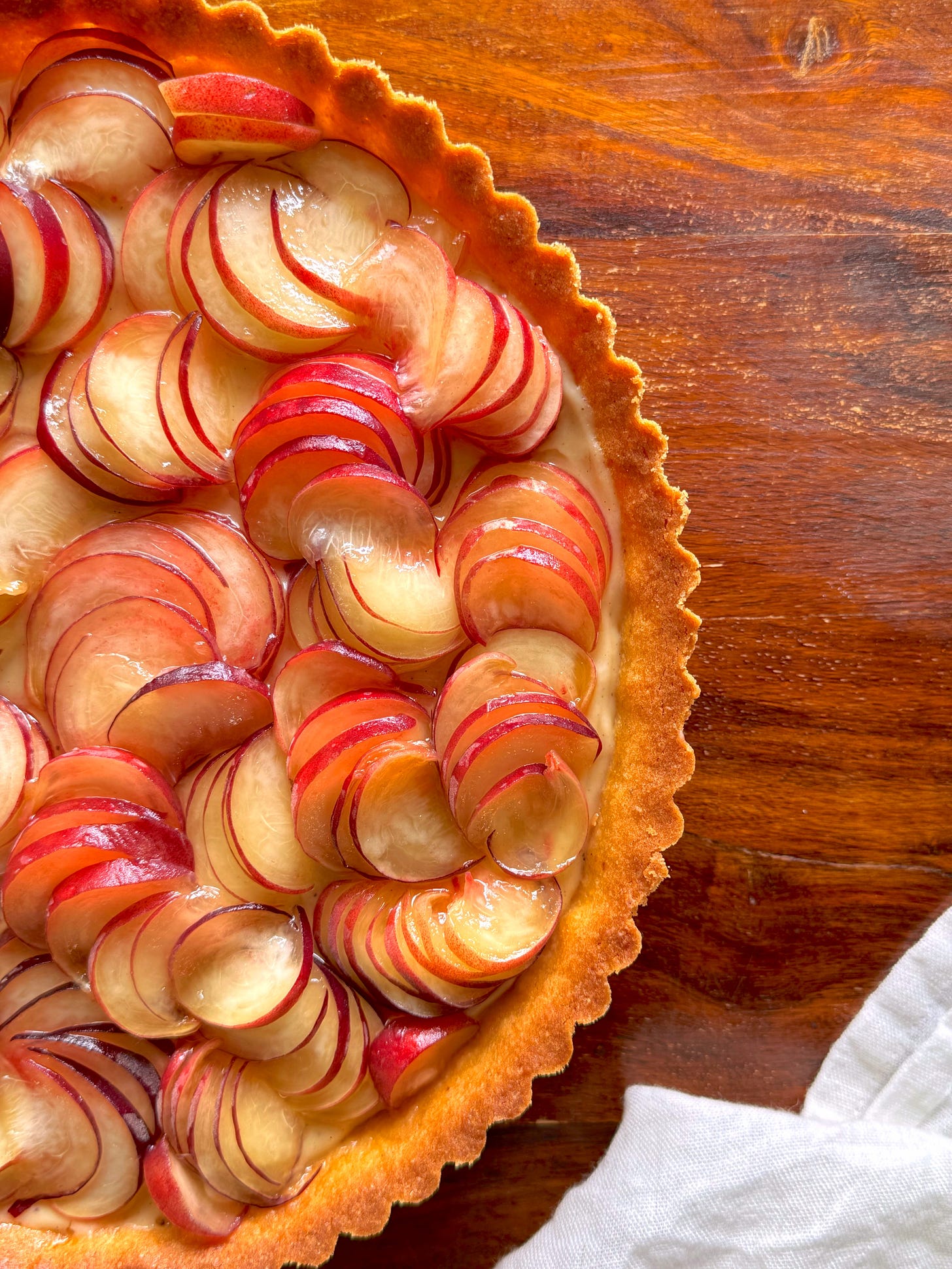👋+: Any-fruit Custard Tarts
fresh fruit, a shortbread crust + how to design a kitchen
Allô! 👋
Hello, and thank you for being here! Welcome (back) to seasonal sundays, the weekly-ish supplement to good food at home, where we take a closer peek at produce at its peak — with a short introduction, a recipe, and a (sometimes related) cooking Q&A. If you’re a new subscriber and would like to read the previous issues, you can click here to find them.
Happy Sunday! I hope you’re all doing well.
Although June’s summer solstice is often celebrated as “midsummer”, you may be relieved to learn that true mid-summer has only just begun. So, if somehow you’re feeling like summer’s nearly over already, fret not: we’ve barely hit the halfway mark, and there’s still loads of deliciousness to come.
Over here in Norway, what this means is that we’re finally starting to get our nights back. In Lofoten up north, the six or so weeks of midnight sun have now officially come to an end. Down in the south, from where I write, we’ll soon be welcoming astronomical twilight once more, which is rather exciting because blackout blinds and sleeping masks can only do so much to keep you from waking up at 4AM, groggily confused as to why it’s so bright out despite your morning alarm having yet to go off. It also means we’ll soon be losing out on some fabulous evening light, but que sera sera. You can’t have everything all at once.
In today’s newsletter, we’ve got an intro to bilberries vs blueberries and drupes (a new-to-me term for stone fruit), a recipe for pâtisserie-style tarts to make the most of any mid-summer fruit, and, last but not least, a long-time follower follows up on that time I built the kitchen in which I currently work, and asks what to consider when designing a kitchen in today’s Q&A.
We’ve only had three full days of sun since I last wrote you, so do forgive the continued theme of comfort cooking. I guess that’s just what this summer weather calls for.
I hope you enjoy the read, the recipe, and the Q&A.
— Simone
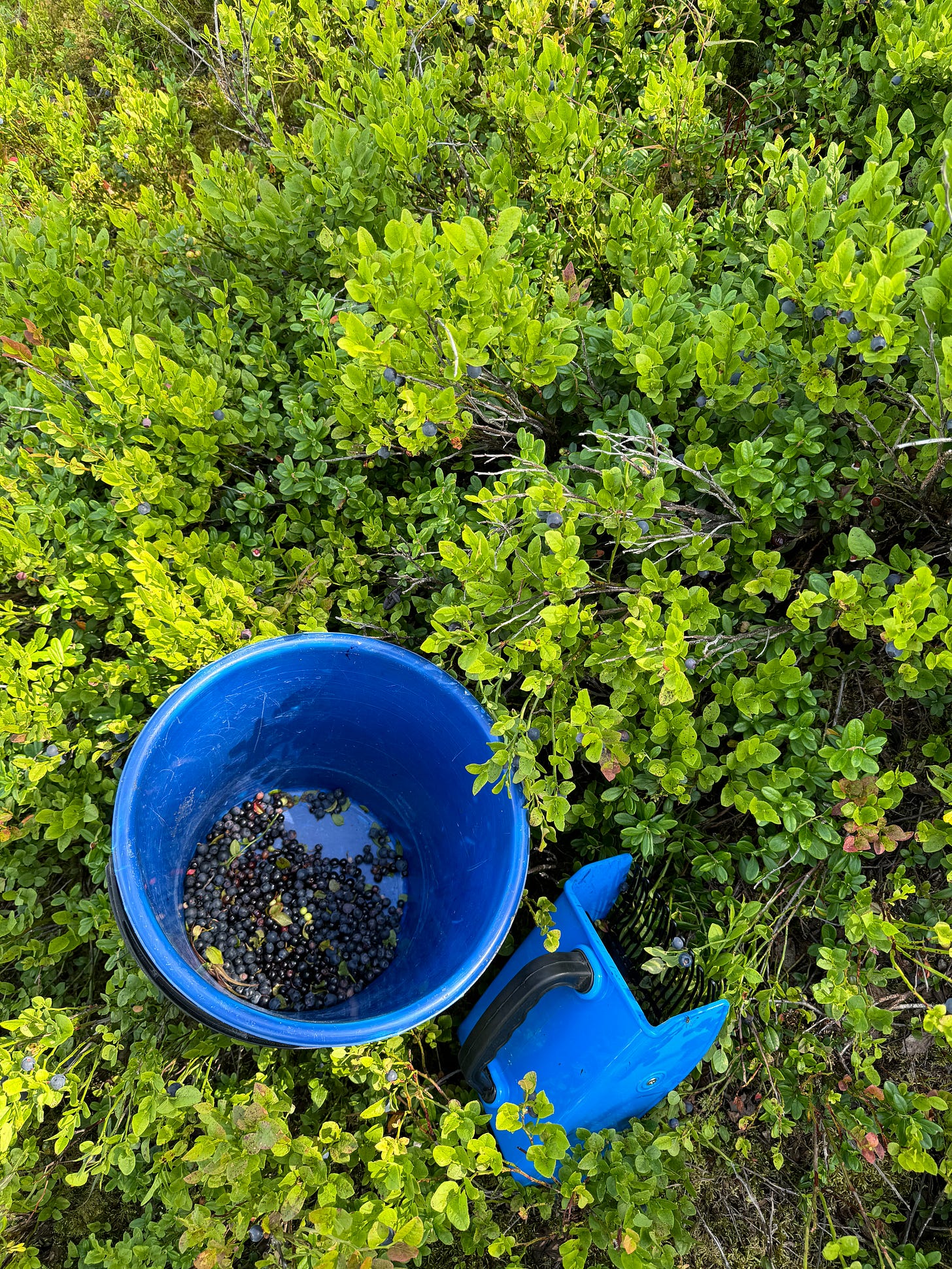
In case you didn’t know, I’m French-Canadian. Being bilingual from the get-go, I grew up knowing that a blueberry was a « bleuet » — that is, until my family moved to Paris. Aged 11, I was perplexed to discover firsthand that French people use all sorts of foreign terms to speak what I thought was a common language (don’t get me started on using the word bibitte to tell my friends what I’d just seen in the schoolyard; that did not translate very well at all).
One of these exotic (to me) expressions was the word for blueberry: in France, a blueberry is not a « bleuet », it is a « myrtille ». Oh well, potayto potahto. They both refer to the same thing, right?
Wrong.
It wasn’t until I moved to Norway around a decade later and began partaking in what is apparently an unofficial national tradition of picking a year’s worth of wild blueberries in the summertime that I realised that the « myrtilles » of my youth never were « bleuets» after all.
My friends, a « myrtille » is not a blueberry. It is a bilberry.
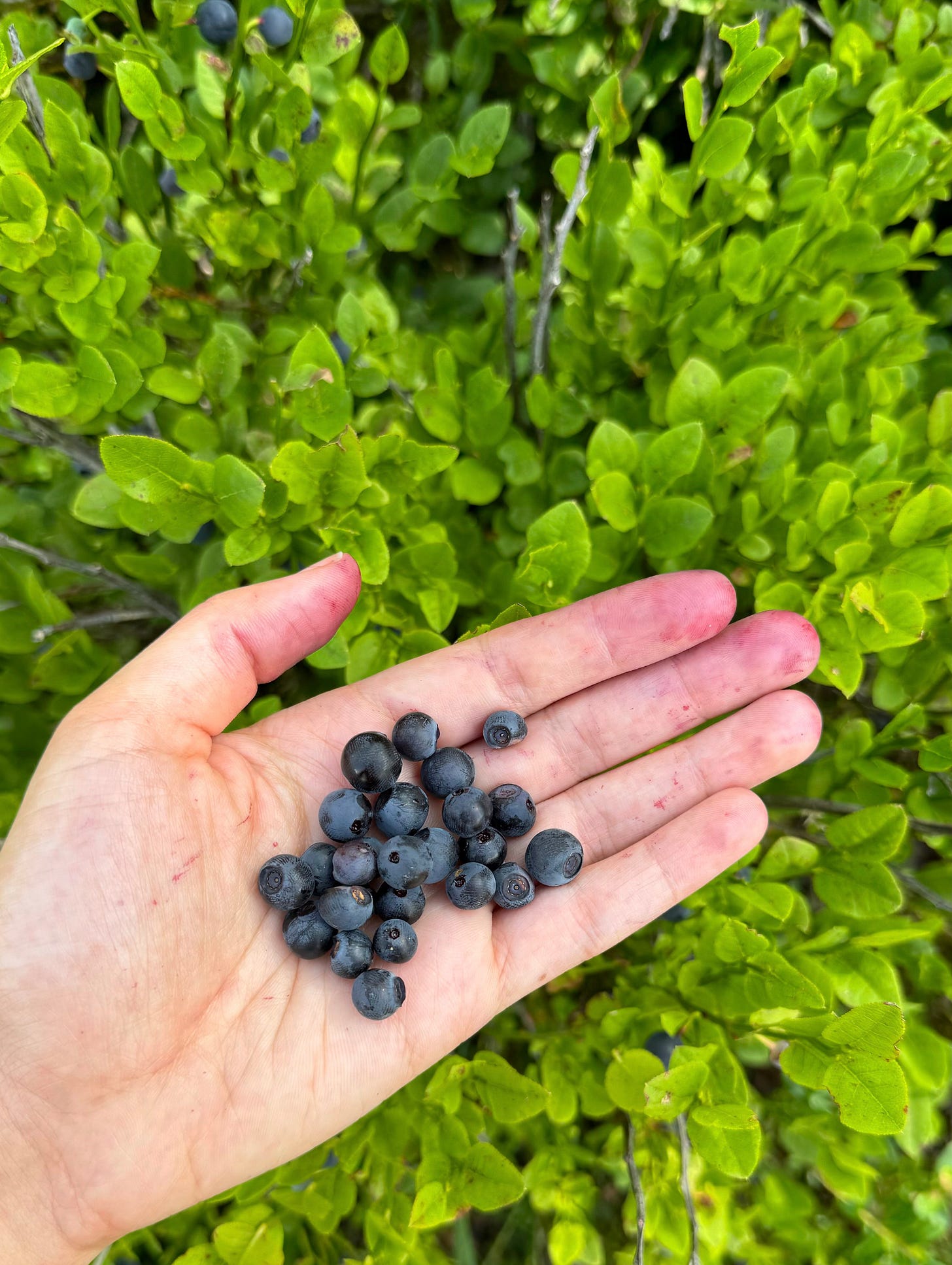
The main difference? Blueberries are native to North America, have a little sepals (those soft star-shaped flaps) on one end, and their flesh is pale green. Meanwhile, bilberries are native to Europe, don’t have any sepals, and their flesh is dark red. Blueberries are usually larger and tougher than bilberries, and are much easier to grow commercially, so that’s what you’ll usually find fresh in a punnet. Bilberries, on the other hand, are generally smaller and more delicate, so any fresh ones you encounter are usually foraged (though you can also find them commercially, frozen whole, or made into jams, jellies, and liqueurs).
Anyway, all that to say: I’ve just been on my annual bilberry picking and decided that, this year, on top of eating them fresh, freezing some for later, and cooking some down into jam, I wanted to make a mid-summery pie.
When I lived in Paris as a kid, one of my favourite things to order from a pâtisserie was a chouquette. It still is (chouquettes are wonderful), but since spending the better part of last year living in France again, one of my new favourite things to buy in a pâtisserie has become a little tart with a rich shortbread base, creamy custard spread onto it, and fresh seasonal fruit delicately arranged over top. Typically sold with strawberries, or a mix of strawberries, raspberries, blueberries, and blackberries (AKA « fruits rouges »), it really is a treat to eat with any mid-summer fruit — berry or not.
As you know, summer is the season of abundance and, if like me you don’t live all that close to the equator and have relatively harsh, dark winters, the time to indulge in fresh local fruit is now.
There are so many plump, delicately-fleshed berries and stone fruit (AKA drupes! who knew!) to choose from, each coming in various shapes and sizes, colours and flavours — as diverse as they are different, I think nearly all would be welcome atop a sweet custard tart.
Below are just some of the fruit you may encounter this mid-summer season, depending on where in the world you are:
Berries
Raspberries
Black raspberries
Blueberries
Bilberries
Whortleberries
Currants (red, white, and black)
Jostaberries
Wineberries
Ollalieberries
Marionberries
Gooseberries (green, red, purple, yellow, white)
Tayberries
Loganberries
Salmonberries
Dewberries
Youngberries
Cloudberries
Boysenberries
Stone fruit (drupes)
Plums (red-fleshed, purple-fleshed, yellow-fleshed, etc.)
Apricots
Nectarines (round, flat, yellow, white, etc.)
Chinese plums
Peaches (round, flat, yellow, white, etc.)
Japanese apricots
Greengages (like Reine Claude)
Mirabelles
Victoria plums
Cherries (sweet, sour, yellow, red, purple, etc.)
Sloes
Cherry plums
Damsons
Pluots / Apriums
Prune plums
The most pleasant way to enjoy most of these fruit is raw. At first. Later, when you tire of eating them straight from the punnet, bush, or tree (or simply want to alternate ways of enjoying them), you’ll want to consider savouring them macerated, quick-pickled or stewed, and then eventually preserved into jams, jellies, and juices — or, quite simply, frozen and thawed.
TIP: HOW TO FREEZE FRUIT WELL
The best way to freeze fresh fruit is to first clean and dry them (if not already clean and dry), then prepare them as you would like to eat them (usually this means keeping berries whole and drupes de-stoned, leaves and stems removed, often cut into segments).
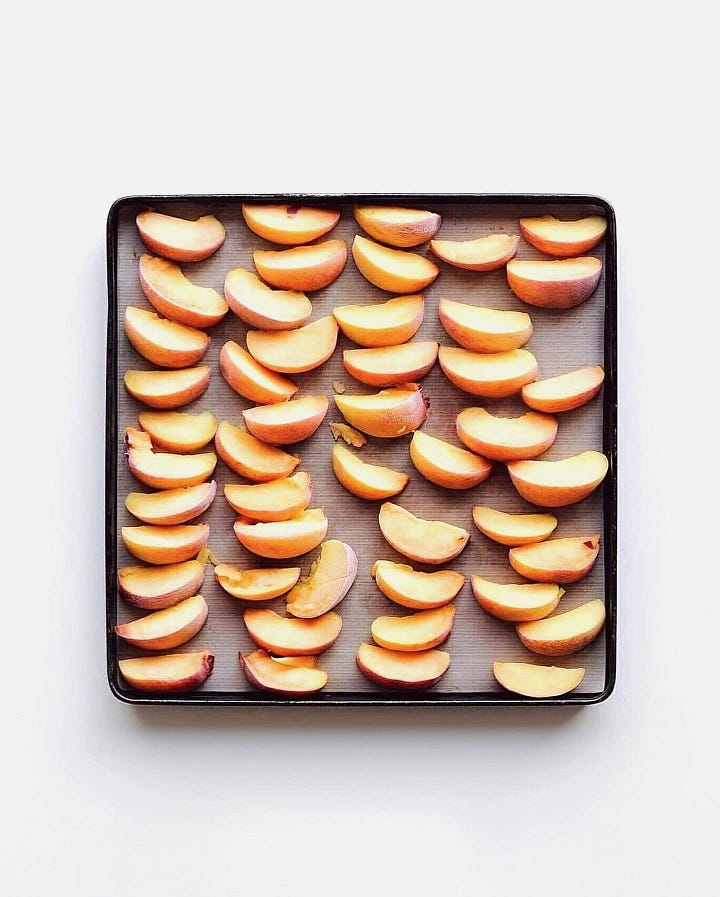
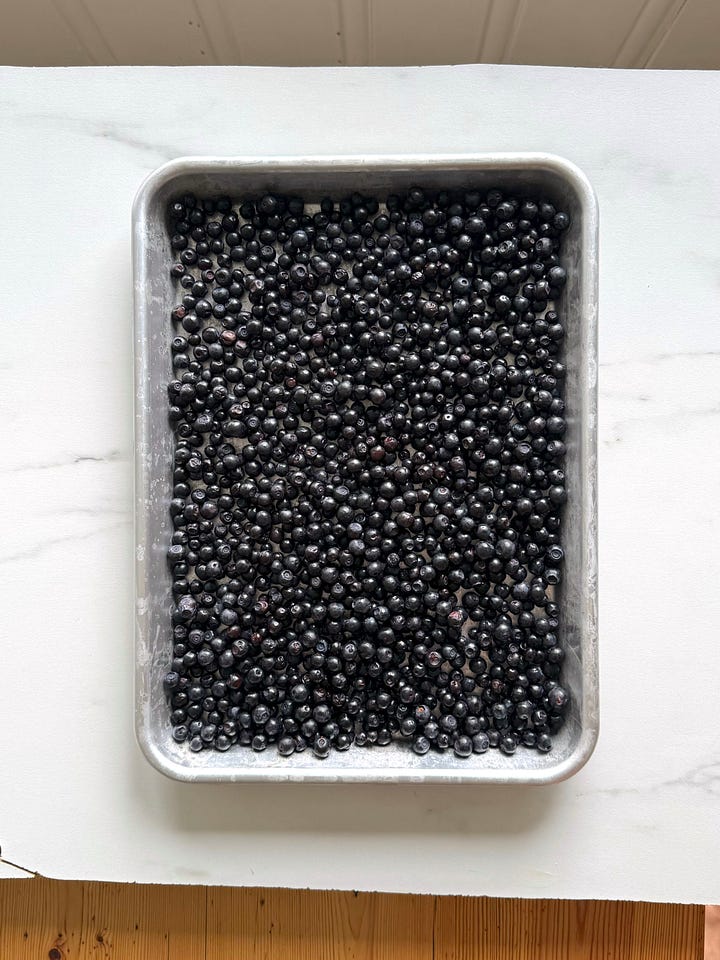
Next, place them on a sheet tray in one layer, no piece touching another if you can manage it, and transfer the tray to the freezer.
Once the fruit is mostly frozen (after a few hours have passed), remove the fruit pieces from the tray and transfer them into resealable bags or containers. Label them with their contents and date if you’re organised, then pop them back into the freezer.
The fruit will keep this way for around a year without any significant loss of quality — just long enough to carry you into the next season of abundant fresh summer fruit.
I’ve showcased bilberries and white doughnut peaches in the recipe below, but feel free to use whatever berries and drupes are abundant and available near you, in any combination that you like (yellow round nectarines and raspberries, or purple plums together with blueberries are particular favourites of mine).
a mid-summer fruit custard tart 🍑🍒🥧✨
As mentioned above, this is the sort of tart you’ll often find in French pâtisseries — typically without a tall edge and with berries on top — it’s simple and refreshing, and near-endlessly adaptable to whatever fleshy fruit are in season. It’s the dessert to make when you have enough fruit for a galette or pie but would rather keep things cool and fresh, and don’t want to stress about keeping butter cold for a flaky pie dough.
The shortcrust I use here was developed to be close in taste to the classic sablé breton, but sturdier so that the tart could have edges and a bottom that can hold the toppings’ weight. Likewise, I’ve modified the typical crème pâtissière to be lighter in texture, all while still beautifully holding its shape. This is the way I prefer my fruit tarts to be.
A MID-SUMMER FRUIT CUSTARD TART
INGREDIENTS
for 8-10 portions
Keep reading with a 7-day free trial
Subscribe to good food at home to keep reading this post and get 7 days of free access to the full post archives.


